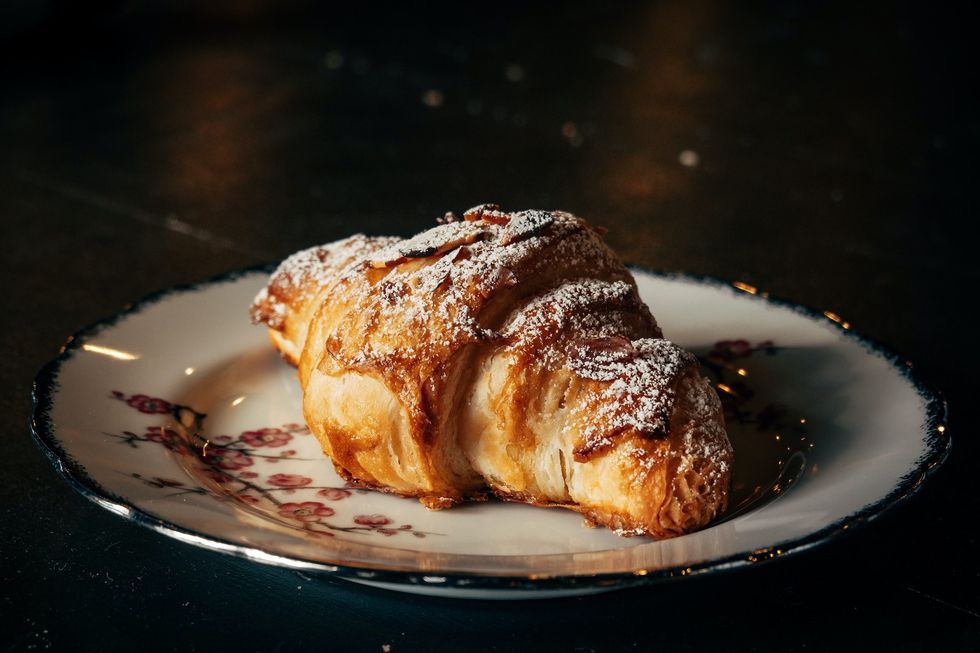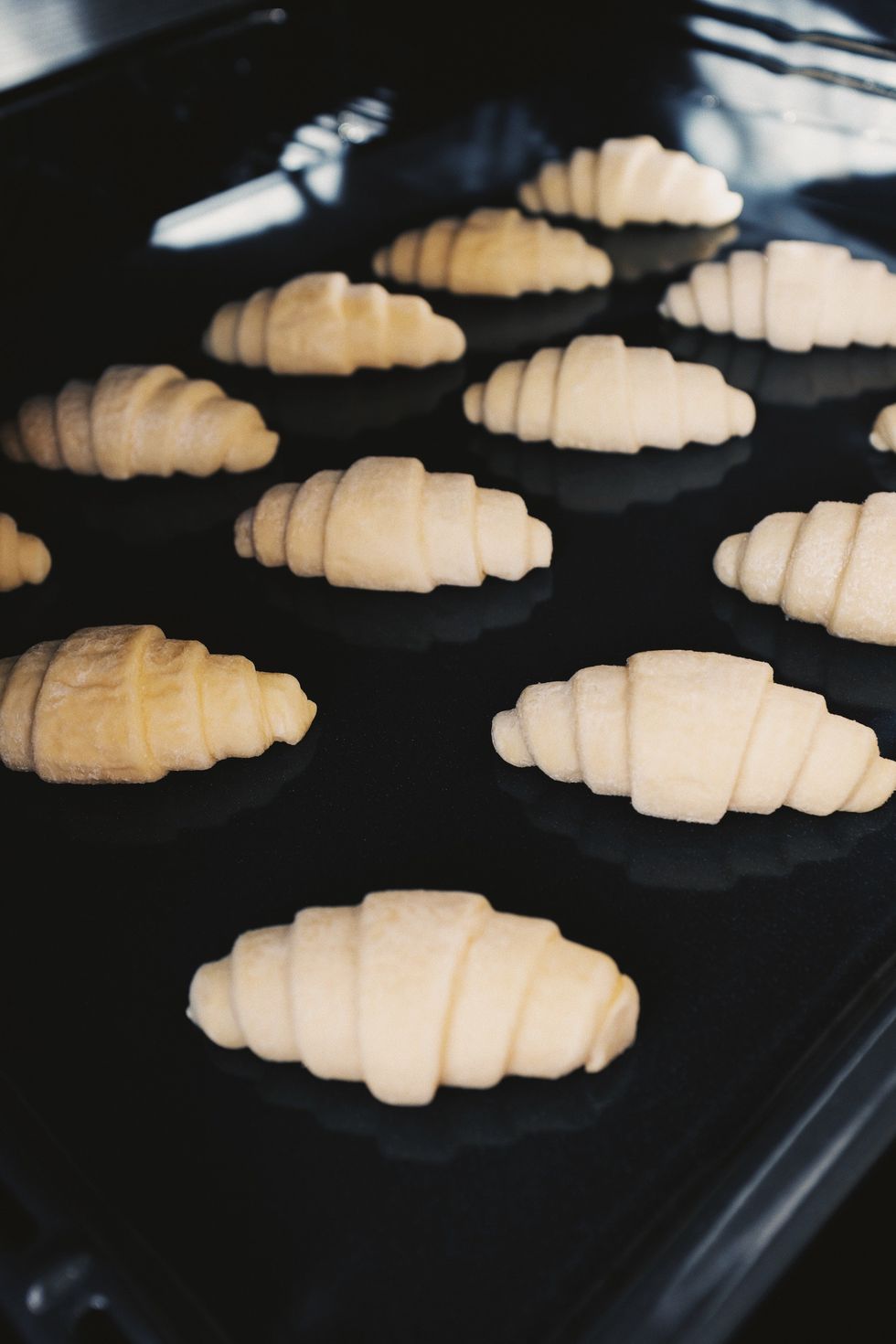In the realm of baked goods, few creations can rival the allure of a perfectly executed croissant. Its delicate layers, ethereal crispness, and buttery richness are enough to transport you to a charming café on a Parisianboulevard, even if you're thousands of miles away.
But here's the secret: crafting these heavenly pastries at home is not only possible, but also incredibly rewarding. From the initial mixing of dough to the mesmerizing folds of buttery layers, I'll guide you through each step, demystifying the process and empowering you to create croissants that rival those of the finest patisseries.
You'll see the effort is well worth once you take your first bite into a freshly baked, homemade croissant on a Sunday morning! To make things easier I am sharing some of the mistakes to watch out for that will make your croissant-making journey smoother and more successful.
Ingredients:
Image via Thomas Plets/ Pexels
For the Dough:
- 2 1/4 cups (280g) all-purpose flour
- 1/4 cup (50g) granulated sugar
- 1 packet (7g) active dry yeast
- 1/2 cup (120ml) warm milk
- 1/2 cup (120ml) warm water
- 1 tsp salt
- 1 cup (2 sticks or 225g) cold unsalted butter
For the Egg Wash:
- 1 egg
- 1 tbsp water
Step by Step Instructions For How To Make Croissants
Image via Skyler Ewing/ Pexels
1. Activate the Yeast:
- In a small bowl, combine the warm milk and warm water.
- Sprinkle the yeast over the liquid and let it sit for about 5-10 minutes until it becomes frothy. This indicates that the yeast is active.
2. Mix the Dough:
- In a large mixing bowl, combine the flour, granulated sugar, and salt.
- Pour the activated yeast mixture into the dry ingredients and stir until a shaggy dough forms.
3. Knead the Dough:
- Turn the dough out onto a floured surface and knead it for about 5 minutes until it becomes smooth and elastic. Add more flour if necessary to prevent sticking.
4. Chill the Dough:
- Form the dough into a rectangle, wrap it in plastic wrap, and refrigerate for at least 1 hour or overnight for best results.
5. Prepare the Butter Layer:
- Place the cold unsalted butter between two sheets of parchment paper.
- Using a rolling pin, pound the butter into a 7x7-inch (18x18cm) square. Ensure it's pliable but still cold.
6. Laminate the Dough:
- Roll out the chilled dough into a larger rectangle.
- Place the butter square in the center of the dough and fold the dough over it like a letter, enclosing the butter entirely.
- Roll the dough out again into a larger rectangle, then fold it into thirds like a letter. This completes one fold.
- Chill the dough for 30 minutes.
- Repeat the rolling and folding process two more times, chilling the dough for 30 minutes between each fold.
- After the final fold, refrigerate the dough for at least 1 hour or overnight.
7. Shape the Croissants:
- Roll out the laminated dough into a large rectangle, about 1/4 inch (0.6cm) thick.
- Cut the dough into triangles. Each triangle should be about 5 inches (12cm) wide at the base.
- Roll each triangle from the base to the tip, forming a crescent shape.
8. Proof the Croissants:
- Place the shaped croissants on a baking sheet lined with parchment paper.
- Cover them loosely with plastic wrap and let them rise at room temperature for 2-3 hours until they double in size.
9. Preheat and Egg Wash:
- Preheat your oven to 400°F (200°C).
- In a small bowl, whisk together the egg and water to make an egg wash.
10. Bake the Croissants:
- Brush the proofed croissants with the egg wash.
- Bake in the preheated oven for 15-20 minutes or until they are golden brown and flaky.
11. Cool and Enjoy:
- Let the croissants cool on a wire rack for a few minutes before serving.
What NOT To Do When Making Croissants
Image via ready made/ Pexels
- Don't Rush The Dough: Avoid speeding up the dough's rise or resting times. Properly letting the dough rise and rest ensures a flaky texture.
- Don't Use Warm Butter: Ensure that your butter remains cold and firm throughout the lamination process. Soft or melted butter can lead to greasy and less flaky croissants.
- Don't Skip The Folding and Rolling: Skipping or minimizing the number of folds and rolls can result in less distinct layers in your croissants. Be patient and complete the full folding and rolling process as directed.
- Don't Overwork The Dough: Be gentle when handling the dough, especially after laminating with butter. Overworking the dough can make it tough rather than flaky.
- Don't Roll The Dough Too Thin: While rolling out the dough, avoid making it too thin. A thickness of about 1/4 inch (0.6cm) is ideal. Very thin dough can result in overly crispy, less tender croissants.
- Don't Skip Chilling Time: Skipping the chilling time between folds and after shaping can cause the butter to melt and seep out, leading to uneven layers and loss of flakiness.
- Don't Open The Oven Too Soon: Avoid opening the oven door frequently while baking. Sudden temperature changes can cause the croissants to collapse. Only open the oven when necessary.
What other recipes do you wanna learn to make? Let us know in the comments!
Header image via Thomas Plets/ Pexels
From Your Site Articles
- Celebrate National Ice Cream Day With This No-Churn Recipe ›
- 45 Fancy Sandwich Recipes That Are Worthy of The Dinner Table ›
- 21 French Pastries You Can Make At Home For A Little Treat ›
- 16 Easy Crescent Roll Appetizer Recipes That Look Ultra Elegant - Brit + Co ›
Anja Kordic
Content writer and savvy strategist in digital marketing. Beyond the world of words, Anja also finds inspiration in traveling and any form of art which infuses her work with creativity, enthusiasm, and a touch of wanderlust. Some of her favorite pastimes are sleeping on the grass, drawing, and training kickbox.


